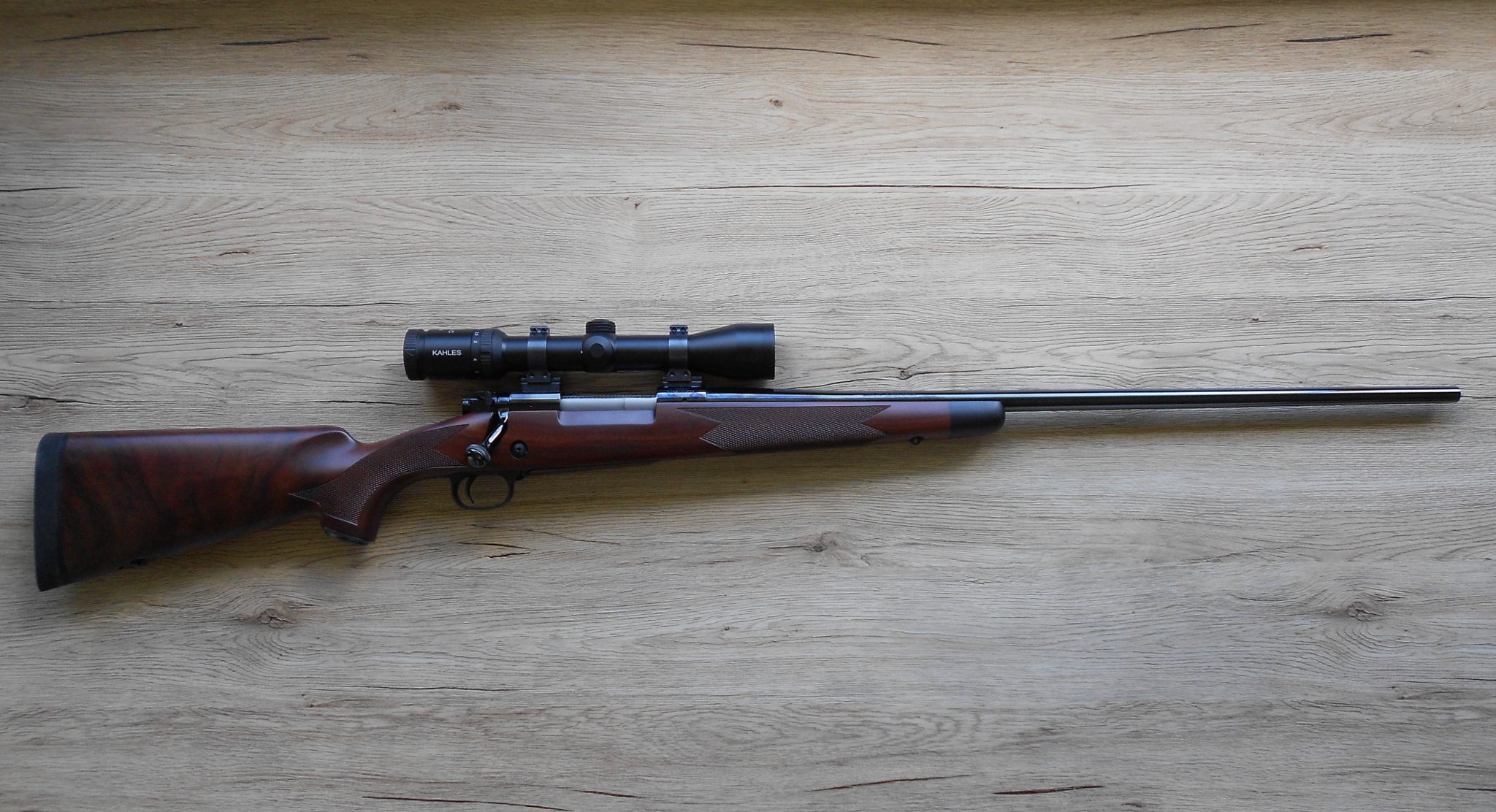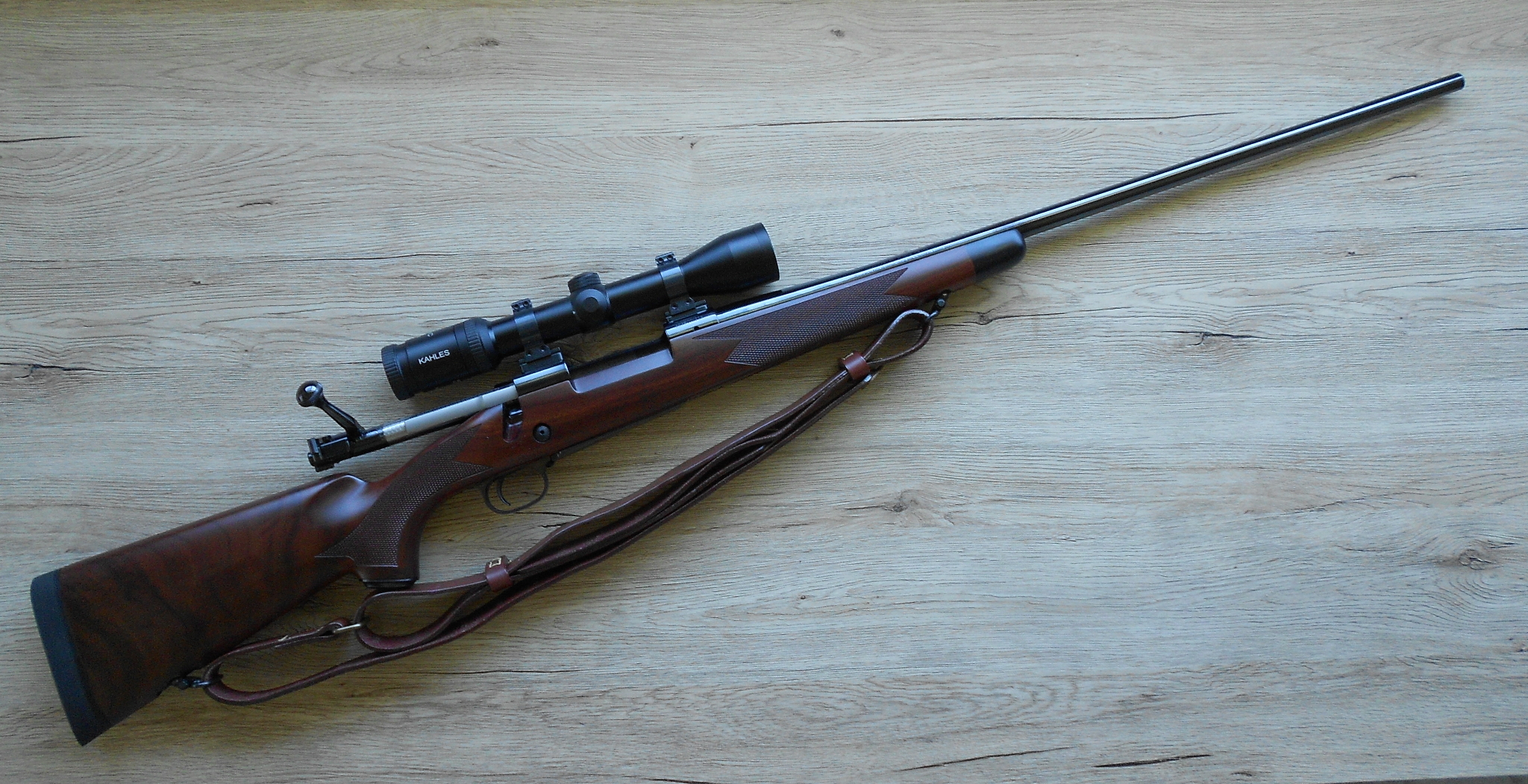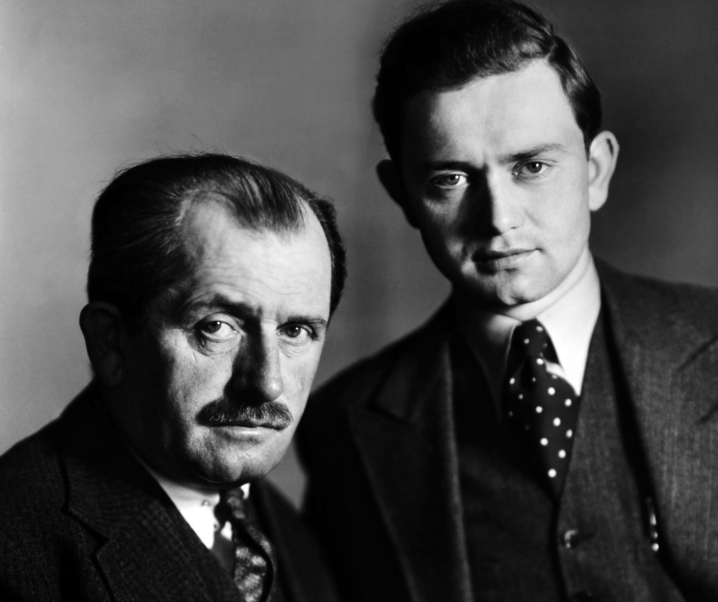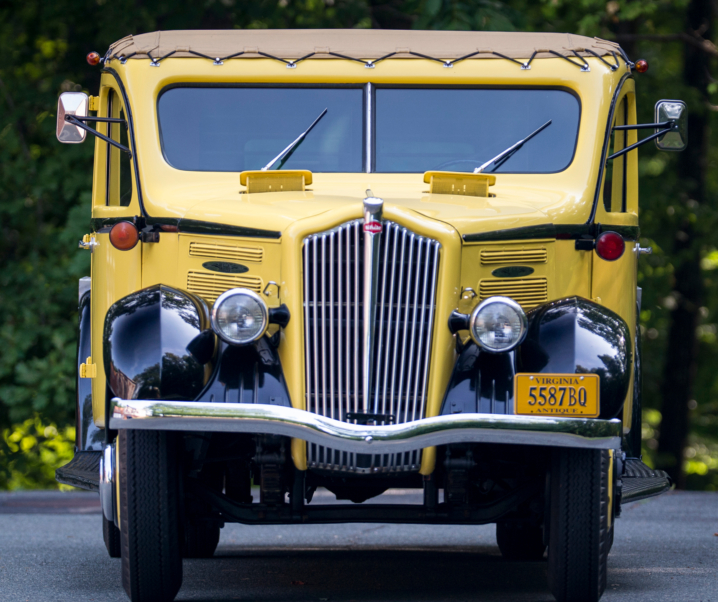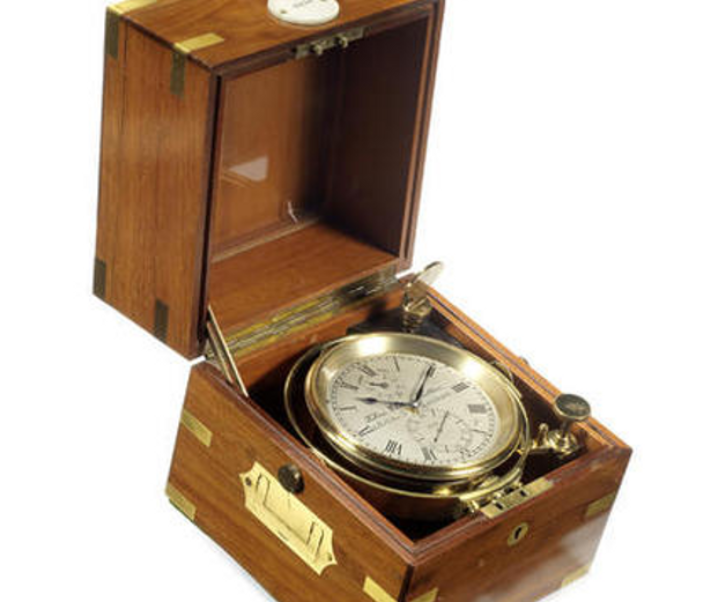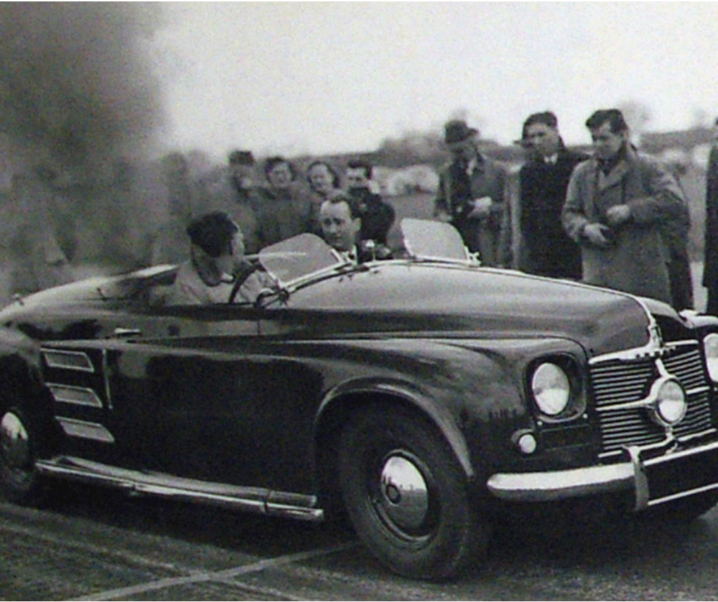Introduction: The Winchester Model 70, an American Icon
The Winchester Model 70 was, and still is, a different rifle for different people. For some it represents one of, if not the greatest American rifles ever created because of the practical elements of its design. The Model 70 brought together elements of the Mauser 98, and the Springfield 1903, then blended and improved on them both to produce one of the most iconic bolt action rifles of the twentieth century: the other iconic rifle being the Mauser 98. But the Model 70 Winchester became recognized as a great rifle not just because of its design, which is second to none, but also because of the people it became associated with, and their journeys to fascinating places in search of exotic game.
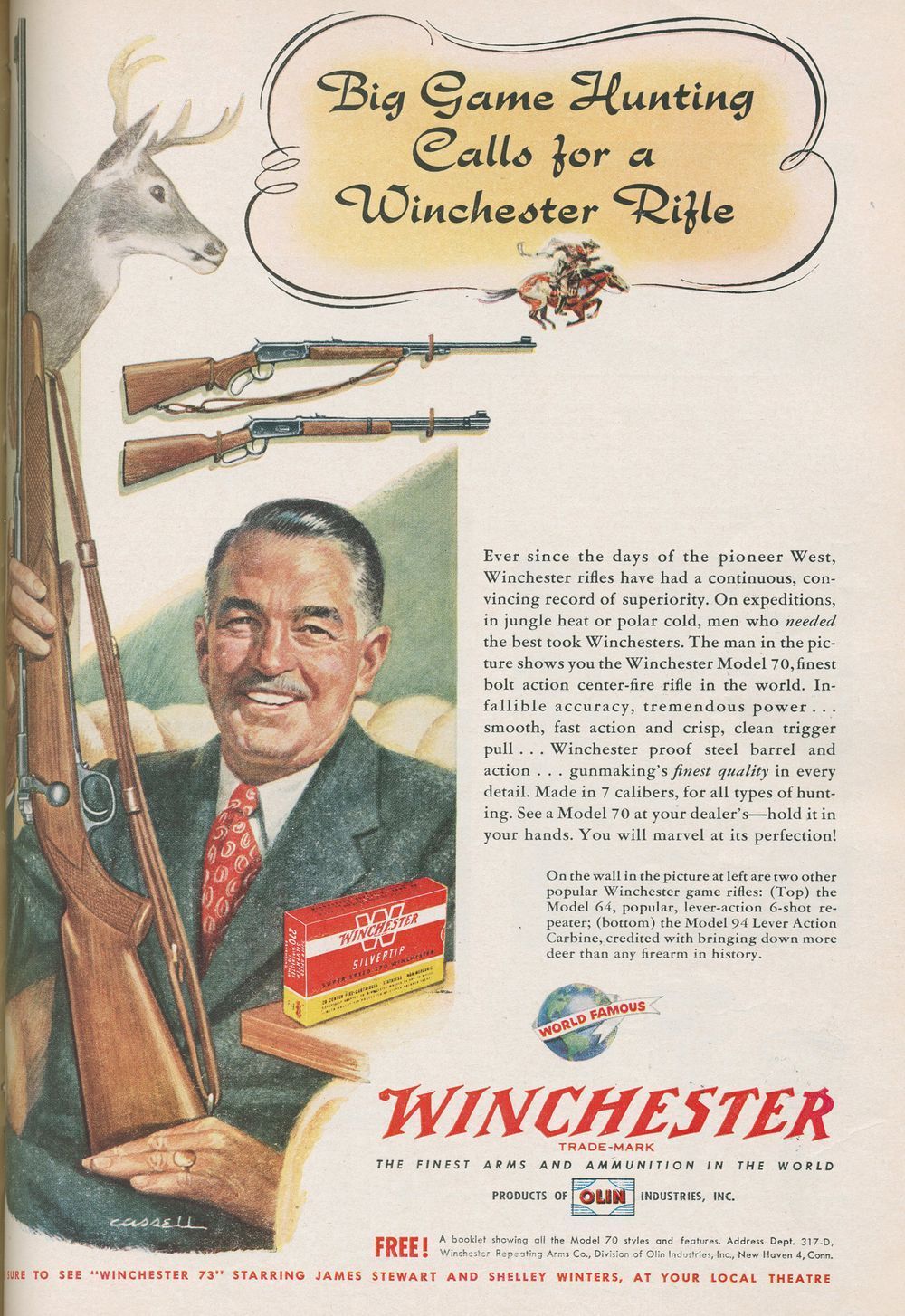
My own first connection with the Winchester Model 70 came in my teenage years growing up in London, England, in the early 1960’s. Living in London had some advantages, and some disadvantages. London was home to some of the great gun and rifle-makers so there were gun shops one could visit and gawk at the gorgeous blued steel and fine walnut offerings on the gun racks. But in London there are no majestic elk wandering around in Hyde Park. There are no exotic Argali sheep to be found grazing along Pall Mall or The Strand: and if there were, and you wandered around Hyde Park with a loaded rifle looking to score yourself one of those majestic elk a British Bobby would soon be on the scene to put an end to your trophy hunting expedition. So there was no way for a spotty English teenager to get started in big game hunting. But, instead of a real rifle and real hunting, there was “Guns and Ammo” magazine, and there were the books: books that would transport a teenage wannabe big game hunter to the heights of the Tien Shan, to Persia, and to the wilds of Africa.
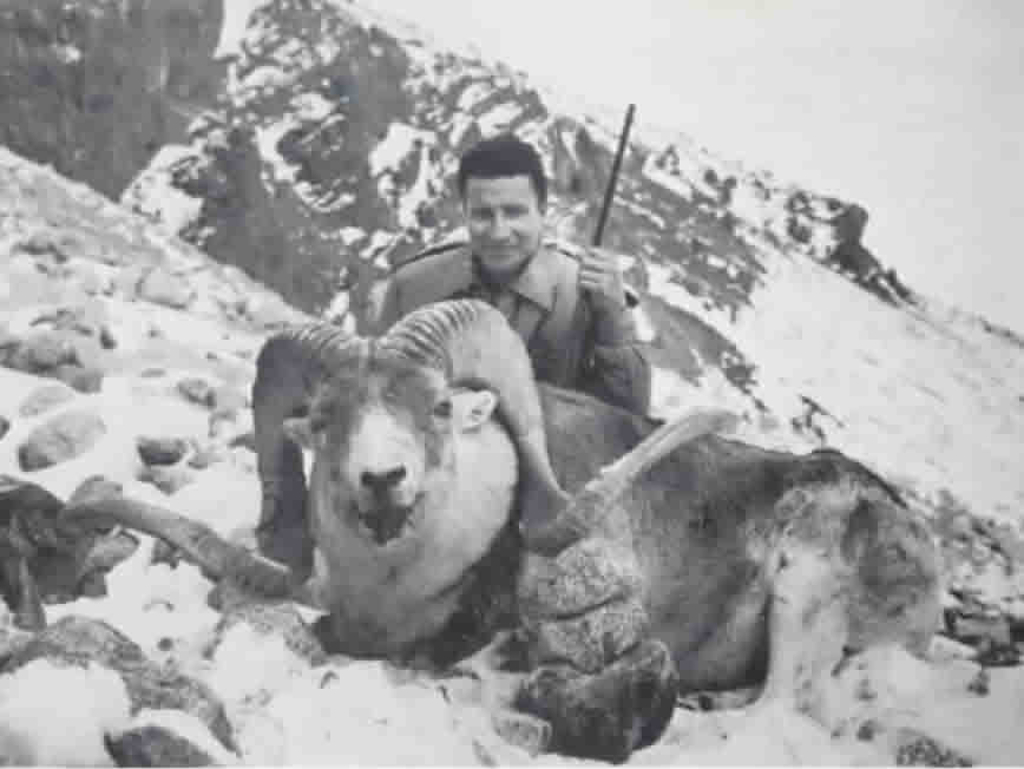
So it was that during high school and college years it was the books and magazines I read, with articles by Jack O’Connor, Elgin Gates, Elmer Keith and others, featuring fascinating people, such as Prince Abdorreza of Iran, exotic places, and equally exotic game. It was in these articles and books that the Winchester Model 70 shone as the great American rifle, (with the Weatherby getting honorable mention also). So it was that by the time I’d graduated college, started in my first job, and moved to a place where hunting was possible, I discovered to my chagrin that the Winchester Model 70 of Jack O’Connor and Prince Abdorreza fame was no longer made, but instead there was a “new” Model 70 that really wasn’t the rifle its predecessor was. The original Model 70 had ceased production in 1963. The way things turned out I wouldn’t buy a Model 70 with the original Controlled Feed action until a full forty-five years later, but when I did it was a Super Grade (of course).
The Winchester Model 70 (pre-64) was not just one of the best and most practical bolt action rifles ever created: it became a cultural icon. It was in part because it successfully became such an admired cultural icon that the post-64 “improved” model was such an unmitigated disaster and did such long lasting damage to the reputation of Winchester and the Model 70.
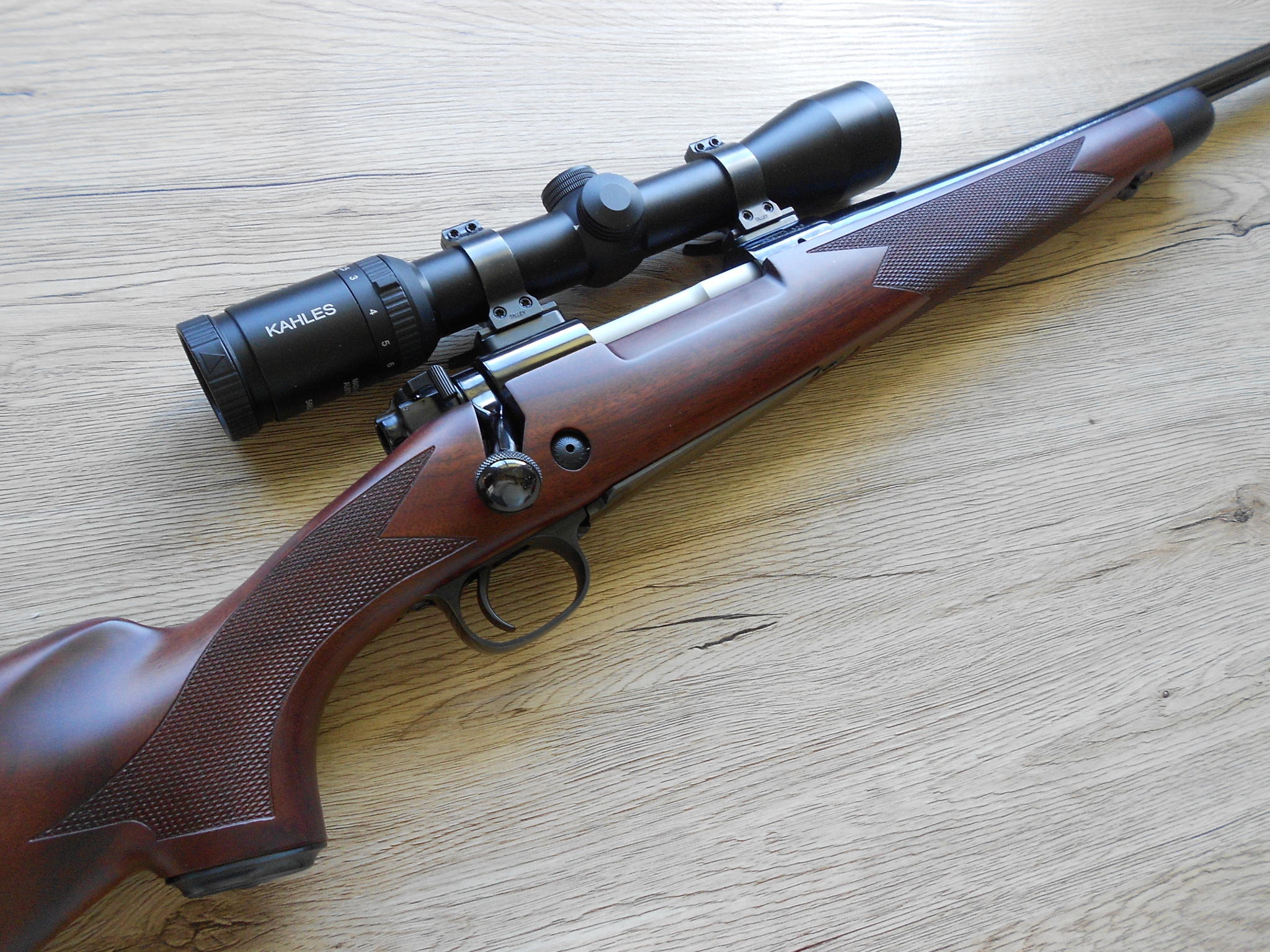
For me to say that the current production Model 70 is a better rifle than the original pre-64 will likely be regarded as sacrilege by some. But the current model blends the best features of the original pre-64, with the anti-bind feature of the later post-64, and puts them together in a rifle that is arguably better made, better finished, and with quality control second to none.

The Original “Pre-64” Winchester Model 70
The story of the creation of the original Winchester Model 70 really begins back in 1898, not with the creation of the Mauser 98, but with the Battle of San Juan Hill during the Spanish-American War that year. Americans armed with Krag–Jørgensen rifles in 30-40 Krag found themselves thoroughly outclassed by Spanish soldiers armed with Mauser M1893 rifles. Uncle Sam put his thinking cap on and decided that his soldiers needed a new rifle, like the Mauser, but better. This led to the creation of the 1903 Springfield rifle and the 30-06 cartridge. The 1903 Springfield used a very similar design to the Mauser’s, with two front locking lugs and a long claw extractor with fixed ejector that would haul sticky cases out with aplomb. The designers of the Springfield decided to give the action a coned breech to ensure absolutely reliable feeding. This was the rifle that America’s soldiers carried into the mud and crud of the First World War and it proved itself excellent.
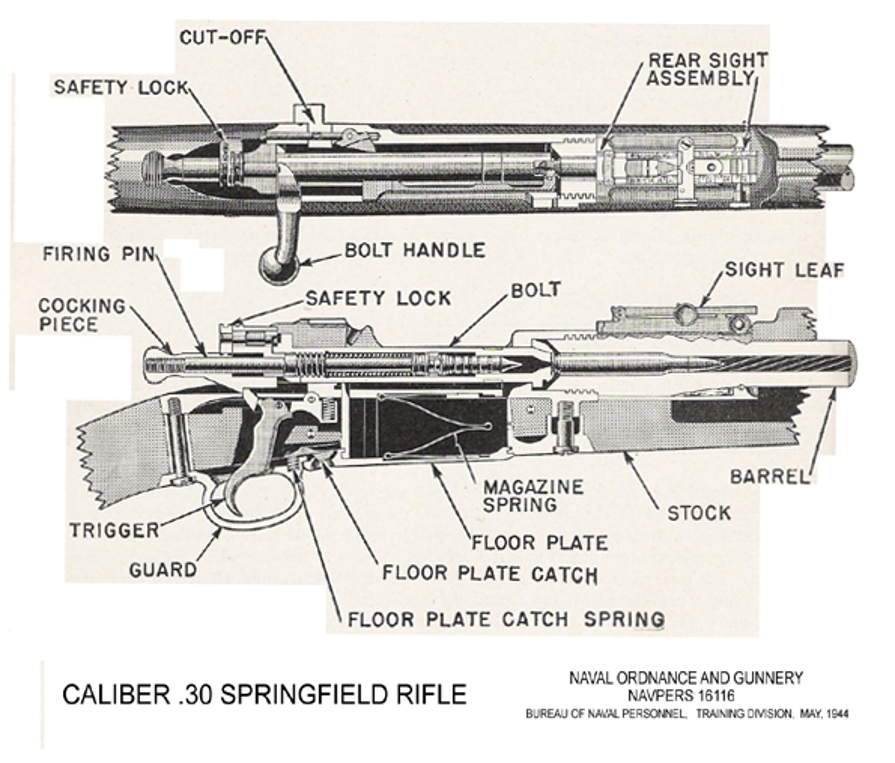
When America’s soldiers returned from Europe many had acquired a taste for a bolt action rifle, and for the 30-06 cartridge. Both Remington and Winchester saw a ready market for affordable bolt action rifles and took quite different approaches to building them. Remington opted to use the war surplus M1917 Enfield action and build their sporting rifle around it. This meant that the rifle they were selling was a sporterized military rifle. Winchester started out trying to do the same thing and produced their Model 51 based on a modified P14 Enfield action. This Model 51 “Imperial” was intended to be a high grade and relatively expensive rifle to be made in a newly established Winchester “Gunsmith Shop”, with production scheduled to begin in June 1918. Even as production began Winchester Vice President Frank G. Drew continued to voice strong opposition to the whole project and forced its closure in February 1920. Frank G. Drew was a firm believer that the American sportsman would only be interested in a lever action rifle. It was not until he saw that the Remington bolt action sporters were selling like little hot cakes did he realize the error he had made.
With the Remington already doing well in the market Winchester would need something distinctly better and so they decided to do a clean sheet new design incorporating the best features they could into this new rifle. It retained the Mauser type claw extractor and fixed ejector, it borrowed the coned breech design of the Springfield, and turned out to be a rather lighter and much better handling rifle than the Remington. This was the Winchester Model 54, and it was introduced in 1925. It would remain in production until 1936 when it was replaced by the Winchester Model 70.
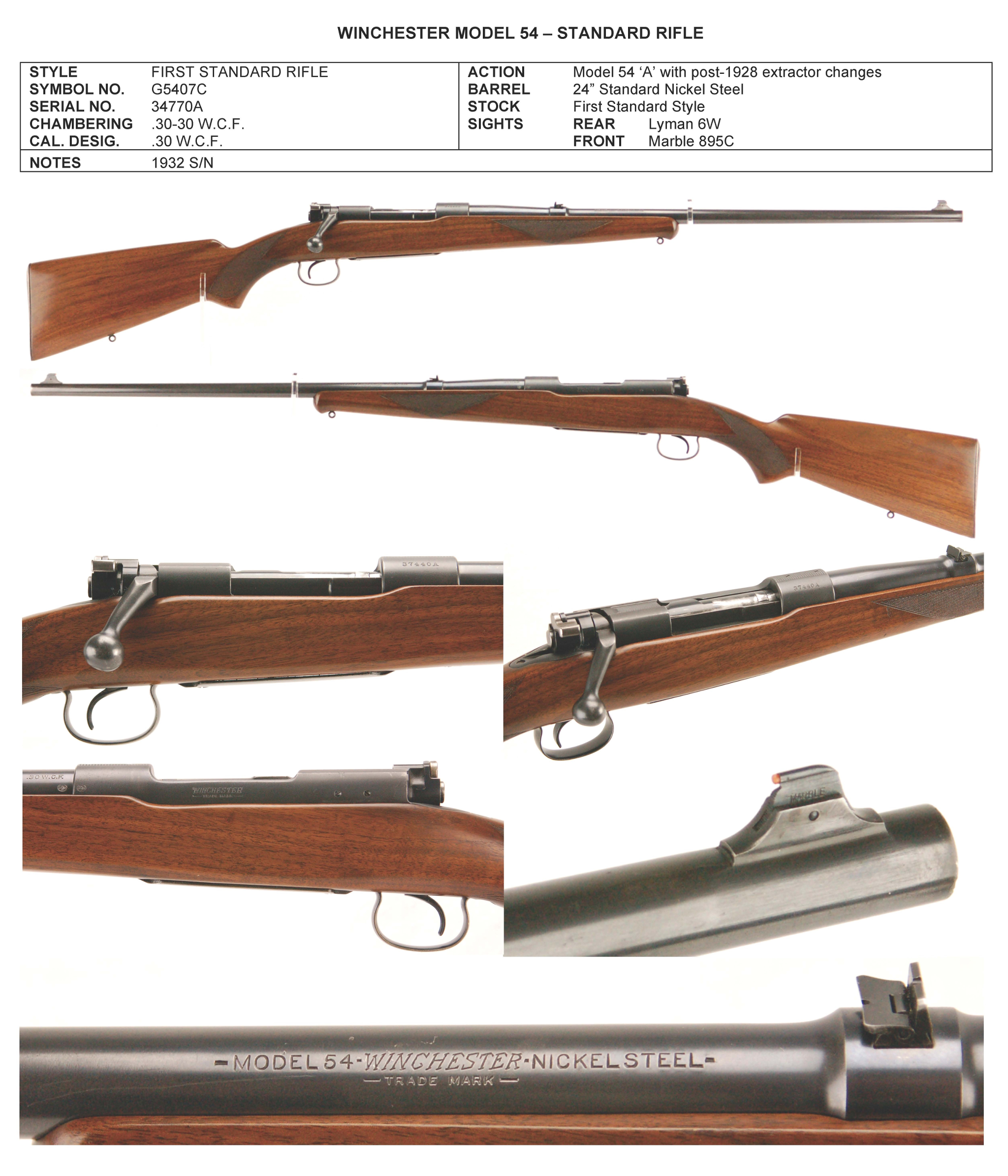
The Winchester Model 70 entered production in 1936 with first shipments to dealers happening in 1937. It was an improved version of the Model 54 and boasted an improved single stage trigger, while the impeccable feeding and extraction/ejection was something that helped make it an instant hit. The Model 70 addressed the design faults of the Model 54 and the other rifles that it had been inspired by: these improvements were not all evident in the first production models however but would be progressively implemented over the years especially in 1947.
While the pre-war production Model 70’s still had the double radiused tang of the Model 54, a design that was prone to causing stock splitting, the 1947 post-war model had a more simple shaped tang that eliminated that problem. The front guard screw was re-positioned making bedding the flat bottom action more positive and consequently improving accuracy. The improvements continued with the addition of a gas vent hole in the right side of the receiver ring to help rapidly reduce pressures in the event of a primer or case head rupture.

The flag-type military style safety catch was changed to one that was mounted on the bolt sleeve and operated horizontally rather than vertically, making the mounting of optical sights much easier. This transitional safety catch was then further improved to become the three position “Model 70” safety catch that has been so widely copied ever since. Imitation is the greatest form of flattery is it not?
The rather tacky looking pressed steel floorplate and trigger guard was replaced with a new far better quality trigger guard unit complete with hinged floorplate and push button release, lifting the appearance of the rifle greatly and providing better functionality.
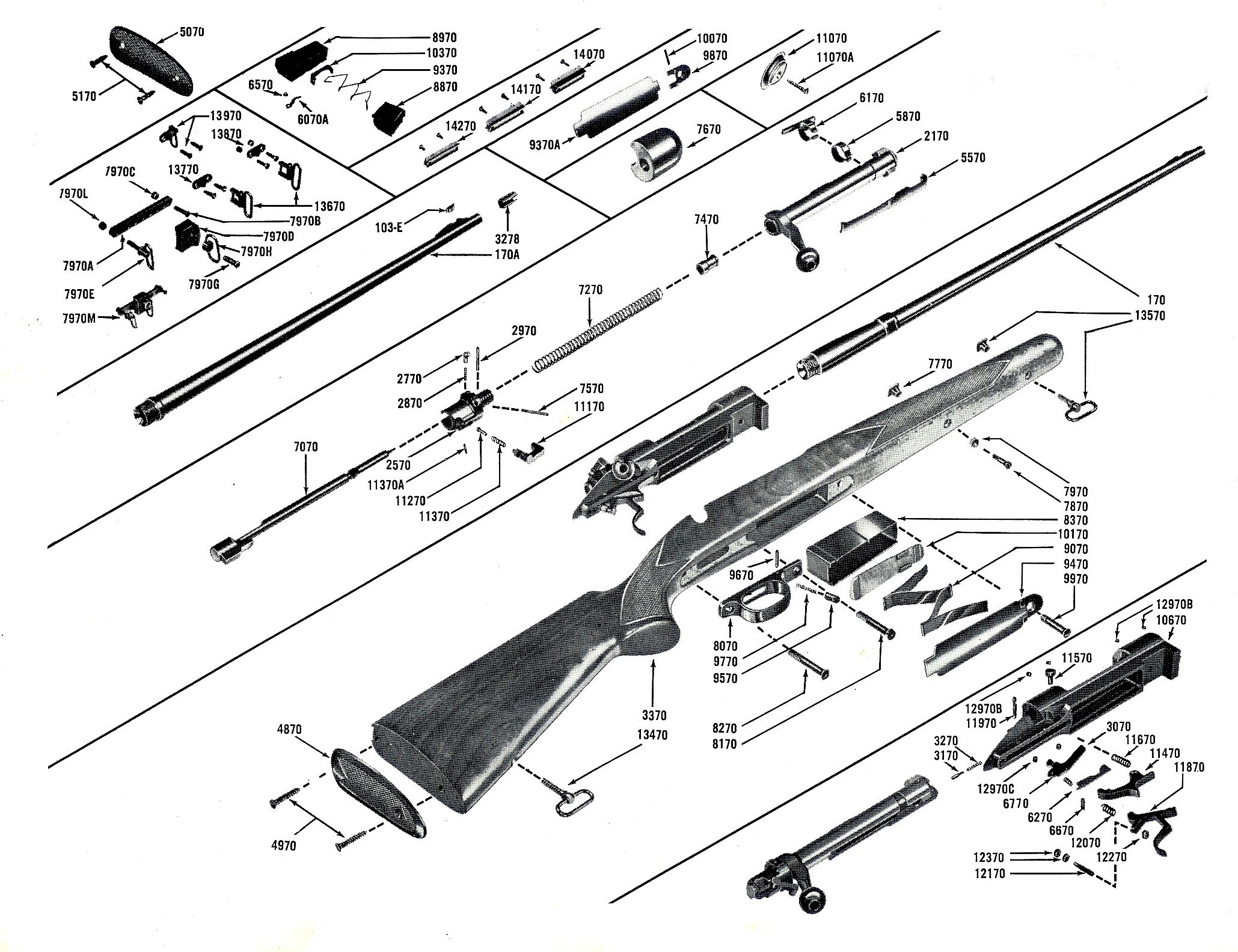
The “piece de resistance” of the improvements to the pre-64 Model 70 was the change made to the trigger, made possible by adding a new receiver mounted bolt stop, removing the need for the trigger assembly to perform that role. The new trigger was an adjustable single-stage unit that proved to be one of the rifle’s main selling points.
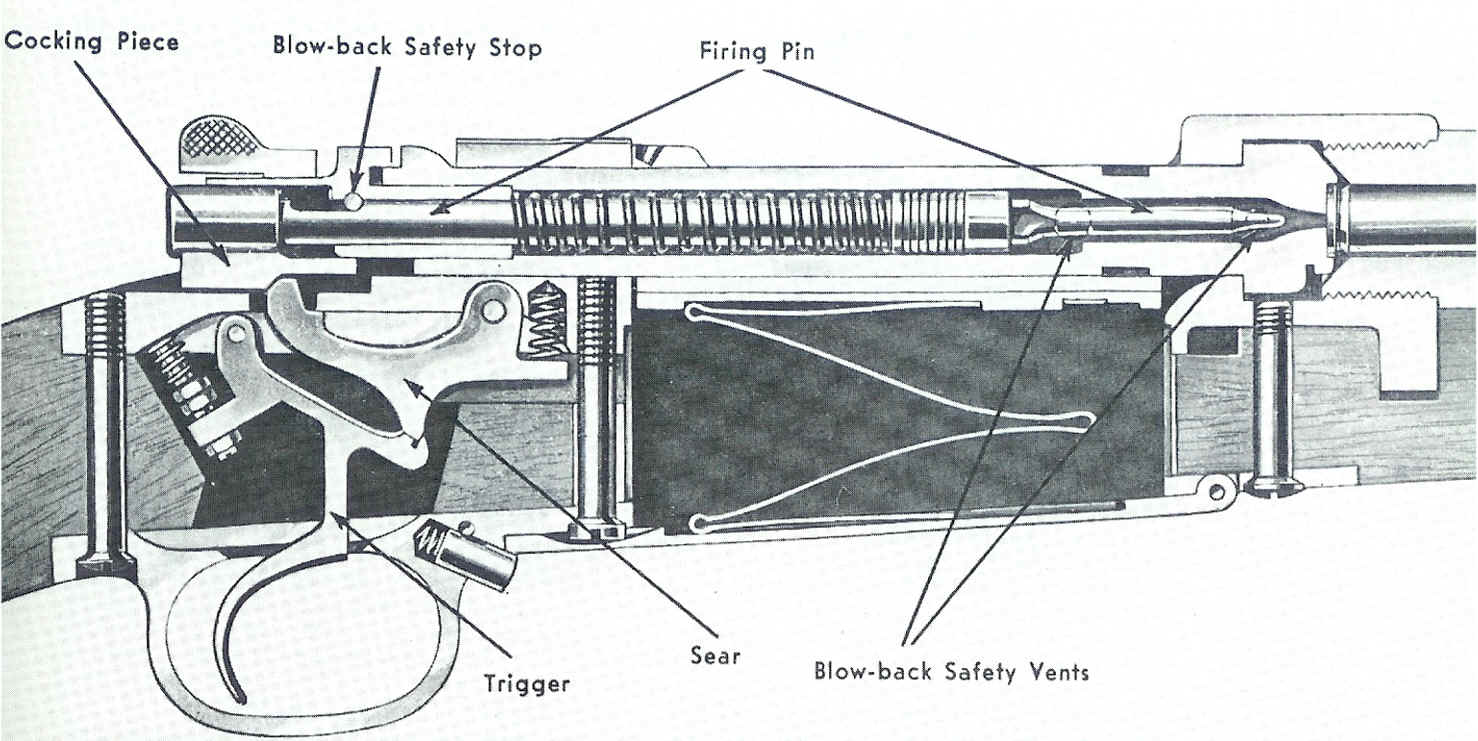
Of note is that the Model 70 featured fully machined parts including a receiver complete with integral recoil lug. The bolt with handle was made from one piece of steel, and the controlled feed action delivered the sort of dependability that a dangerous game rifle must unquestioningly deliver. In short, this pre-64 rifle exuded quality, it was a rifle one could stake one’s life on: no small claim to fame.

Over its production the pre-64 Model 70 was made in a huge variety of regular production caliber offerings: this includes but is not limited to; .22 Hornet, .220 Swift, .243 Winchester, .250 Savage, .257 Roberts, .264 Winchester Magnum, .270 Winchester, 7×57 Mauser, .300 Savage, .308 Winchester, .30-06 Springfield, .300 H&H Magnum, .300 Winchester Magnum, .338 Winchester Magnum, .35 Remington, .358 Winchester, .375 Holland & Holland Magnum, and .458 Winchester Magnum. In addition to these were many special order rifles in some quite unexpected calibers such as the 9×57 Mauser for example, some of these having been fitted with Model 54 barrels.
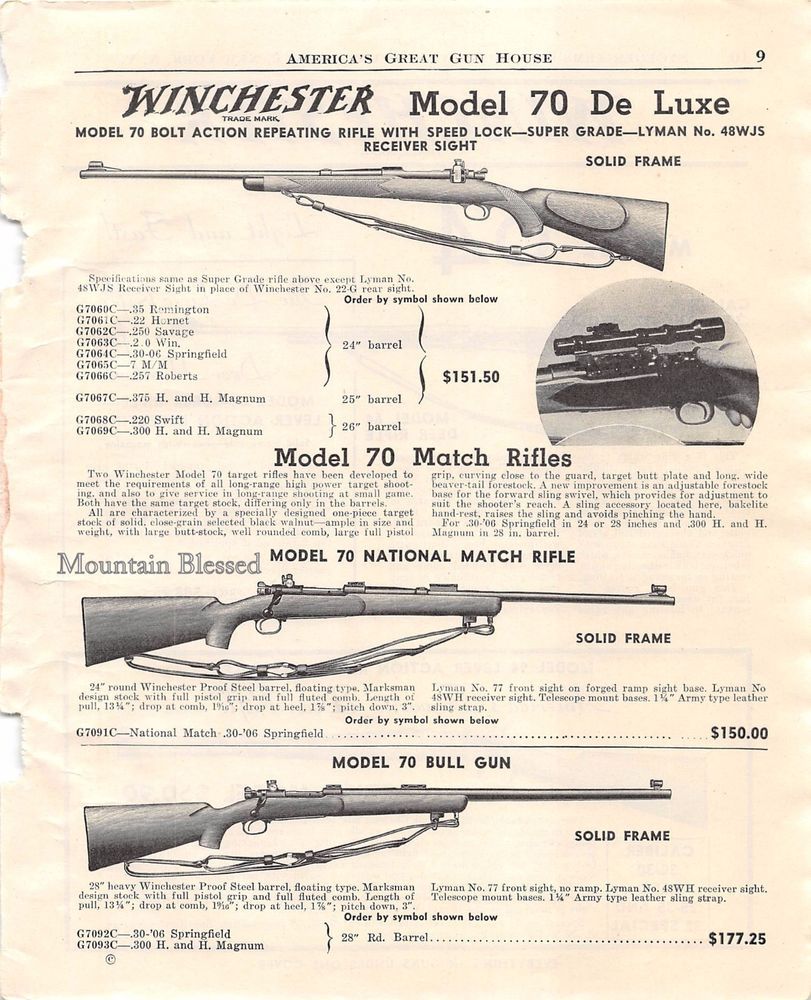
The pre-64 Model 70 was made in a number of grades and models including; Super Grade, Super Grade Featherweight, Super Grade African, Alaskan, Featherweight, Varmint, Bull Gun, National Match, and Target.
The last pre-64 Model 70 made bears serial number 581,471.
The Post-64 Winchester Model 70
In the post World War II era Winchester were faced with the problem of being a maker of the highest quality production rifles, but faced with increasing competition from less expensive rifles that were, arguably, inferior to the Model 70, but which people were buying primarily because they were cheaper. Winchester found they simply could not make the Model 70 cheaply enough to compete and indeed got to the point where they were losing money on the original rifle. Faced with some tough choices Winchester decided to go the way of the inexpensive mass production rifles and compete with them head to head. Wisdom with the benefit of hindsight is the worst kind of wisdom, but it would probably have been far better for Winchester to keep the original Model 70 in production as a more high quality, and more expensive rifle, and create a new cheap model to sell at a low price for that segment of the market. Winchester chose to put all their eggs in one basket, and that basket was the cheap rifle market basket.

In order to make the new Model 70 inexpensive to make and competitive to sell against its mass market rivals Winchester sought to cut production costs as much as they could. The Mauser style claw extractor was removed and the new bolt made with a recessed bolt face, a small spring loaded extractor, and a spring loaded button ejector: this meant that the coned breech was done away with in favor of a squared breech.
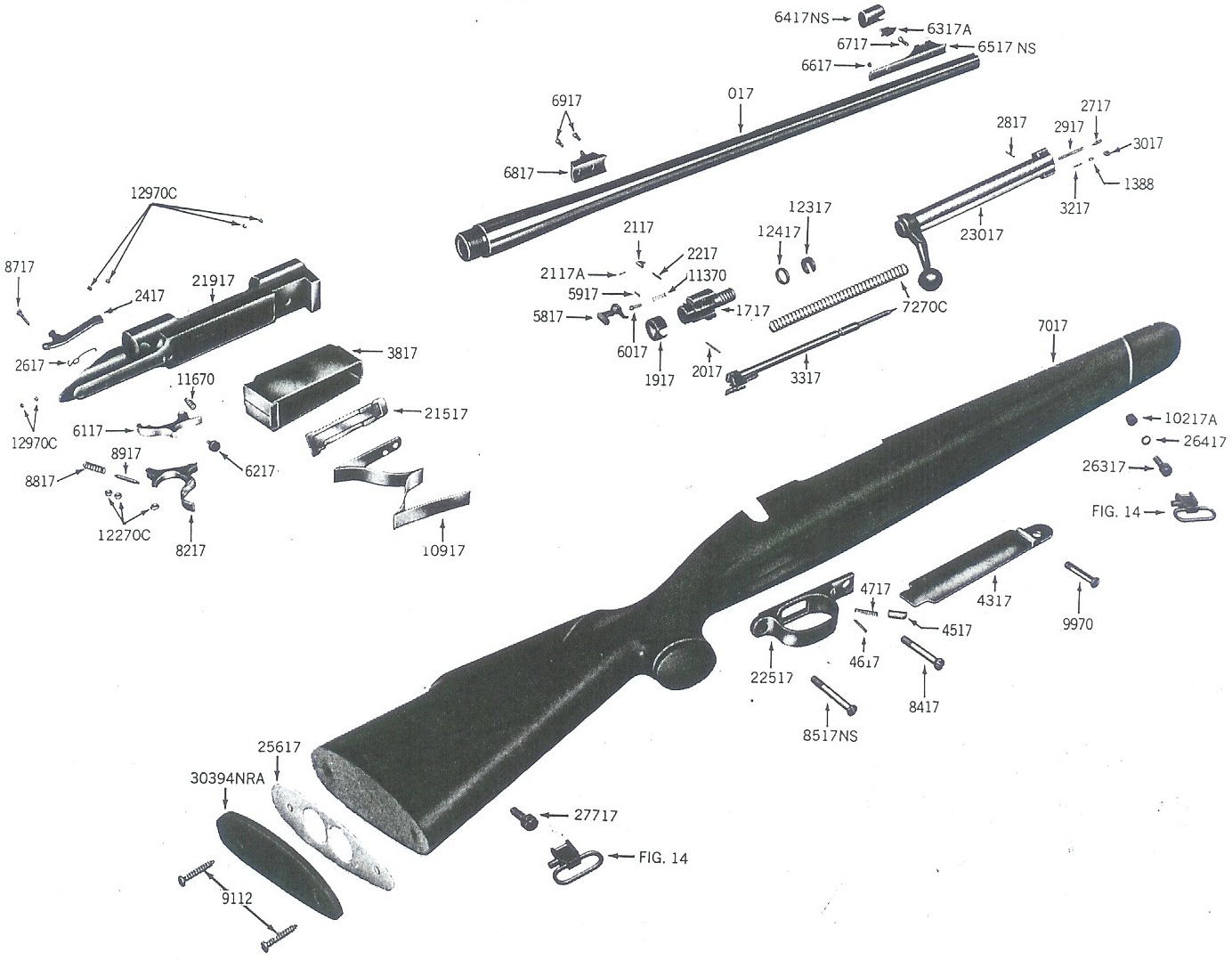
The rifle was no longer a Controlled Feed action but a Push Feed action. This was touted as being “stronger” and many have written to support that view. I’m one who tends to disagree with that: the new push-feed bolt featured a Remington style fully enclosed bolt face and was promoted as fully supporting the cartridge case head on the notion that this would help prevent a ruptured case head from causing too much trouble. There are two ways for a rifle action to contain a cartridge case that is giving way under excess pressure; one is to try to contain it, the other is to vent the excess gases to reduce the pressure as quickly as possible. The pre-64 Model 70 fully supported the case head up to the extractor groove, by which point the case is already solid brass. If the case head let go at the extractor groove the excess gas was vented out as quickly as possible. I think that venting the excess gases out as quickly as possible provides more protection against the action failing like a hand-grenade.

Some of the changes in production methods for the new rifle were not bad. The receiver was no longer milled but forged from chrome-molybdenum steel, the bolt body with locking lugs was machined but instead of the bolt being in one piece the bolt handle was an investment casting pressed and brazed in place. Neither of these things were problematic.
One of the biggest areas of cost cutting was the stock of the new Model 70 and the fittings such as the trigger guard and magazine. The reaction of many is probably best summed up by Jack O’Connor when he saw the proposed model “Then I saw the pilot model of the ‘New Model 70.’ At the first glimpse I like to fell into a swoon. The action was simplified, the trigger guard and floor plate made of a flimsy-looking one-piece stamping. The stock had stodgy lines and no checkering, and the barrel channel was routed out so much a herd of cockroaches could hold a ball below the barrel. On my first glimpse of the ‘New Model 70’ I was surrounded by the designers and by Winchester brass. I told them the creation would not sell, that it was one of the ugliest rifles I had ever seen.”
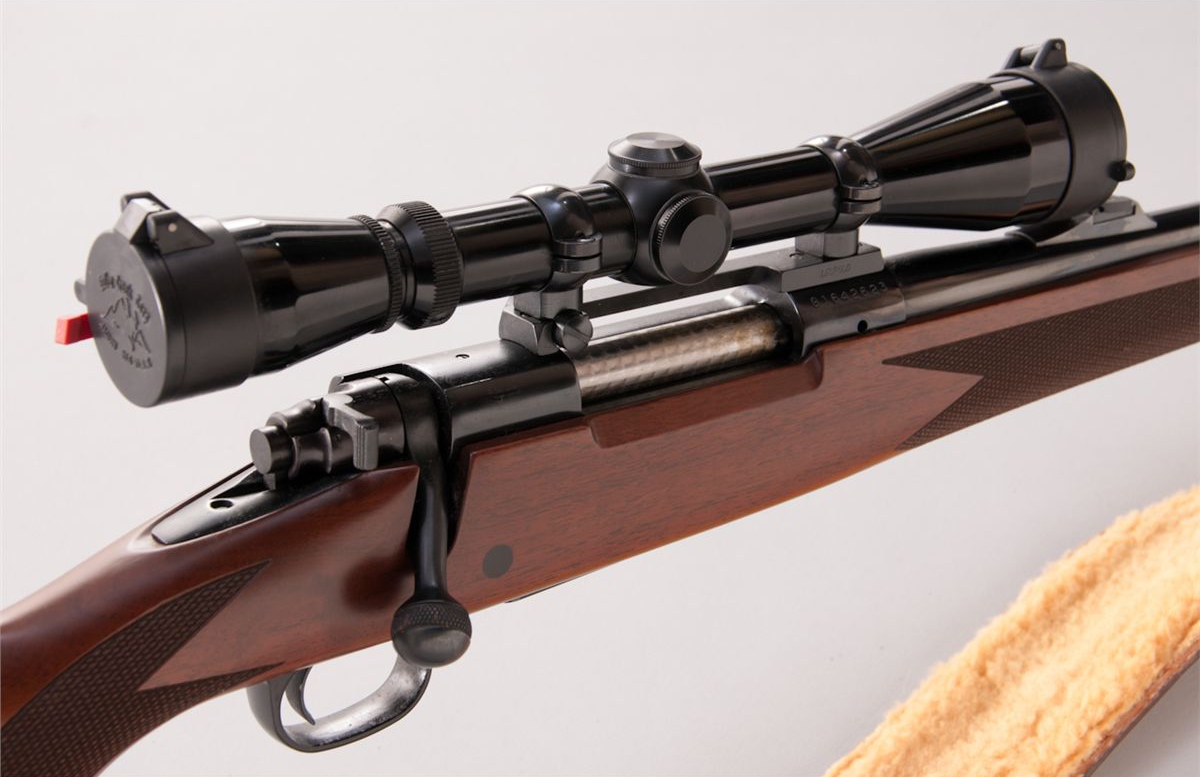
At the time of its introduction the new action lacked an anti-bind rail and so, without the Mauser claw extractor helping to provide that function, it was a sloppy and rather messy affair. It just didn’t have the positive dependable feel of its predecessor. Winchester would subsequently add an anti-bind action rail working with a slotted extension below the right locking lug. It proved to be a simple system that works so well it has been retained on the current production controlled-feed rifles.
During the 1970’s many people who might have bought a Model 70 of the pre-64 style declined to purchase a post-64 rifle. I was one of those, I bought a Mannlicher-Schönauer with a controlled feed action instead. It wasn’t inexpensive, but it was a great rifle. That is reflective of how a lot of potential Model 70 buyers would have reacted. If you were looking for a quality rifle then the post-64 Model 70 wasn’t likely to be a rifle you’d choose.

The post-64 Model 70 was progressively improved by Winchester over the succeeding years and it had to be in order for it to continue to be competitive. Winchester progressively improved the stock and overall finish and also moved partially back to a controlled feed action with the making of a Controlled Round Push Feed. This action was offered on the Super Shadow and Coyote Model 70’s which were made in the early 21st century chambered for the then new Winchester Short Magnum and Super Short Magnum cartridges.
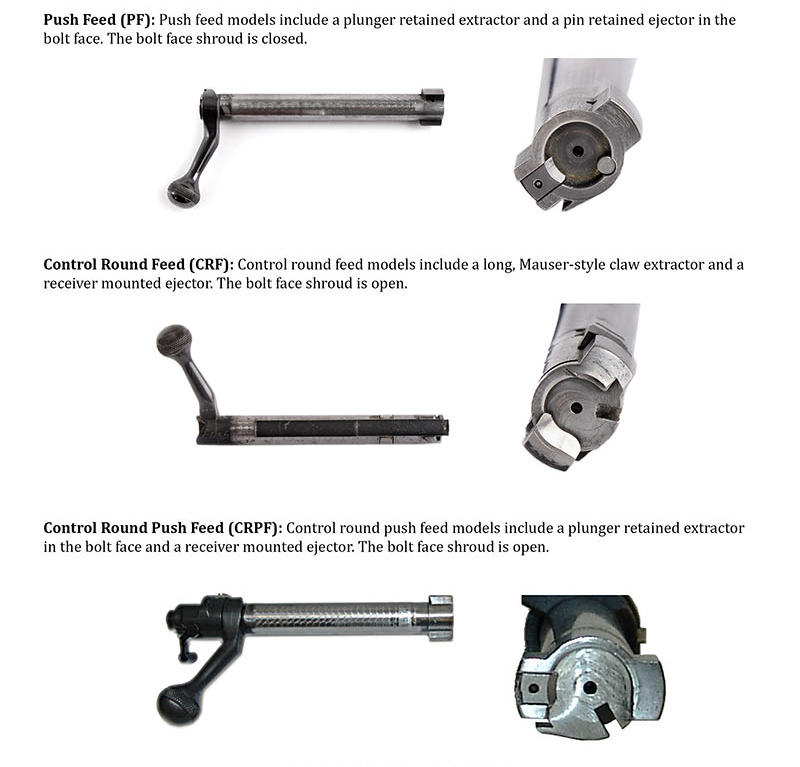
The “Pre-64” Winchester Model 70 Re-Born
It was in 1992 that Winchester were able to re-introduce the traditional Model 70 complete with full length Mauser style claw extractor, coned breech, and receiver mounted fixed blade ejector. The new action also improved on the original pre-64 Model 70 by using the extended right bolt lug with anti-bind slot, and the action anti-bind rail. The new Classic Model 70 also included the superb Winchester MOA trigger to make it just about as perfect as a rifle can be. It became a rifle so good that in 1999 it was named “Bolt Action Rifle of the Century” by “Shooting Times”, and with good reason. The classic Model 70 was back, and better than ever, not a cheap rifle, but then which of us ever wanted it to be a “cheap” rifle.
The new Model 70 was made by U.S. Repeating Arms Company who had purchased the rights to make the rifle in 1981. U.S. Repeating Arms Company was in turn purchased by the Herstal Group (Browning/FN) of Belgium in 1990 and they were purchased by GIAT in 1992. Finally GIAT was purchased by the Walloon Region of Belgium which includes the town of Herstal where Browning/FN are located.
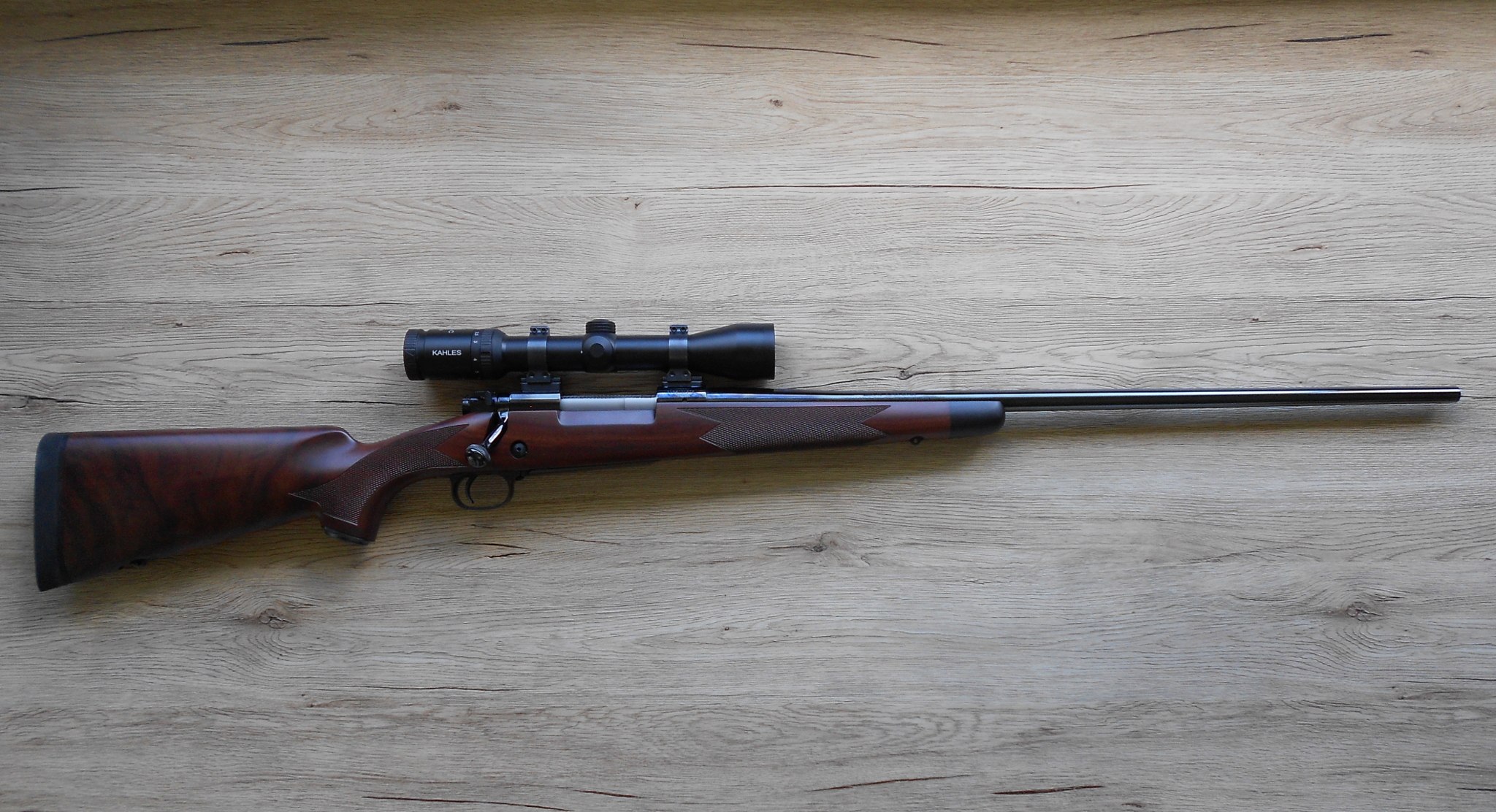
The corporate changes of ownership resulted in manufacture of the new Classic Model 70 moving from New Haven, Connecticut, to a Browning/FN factory in Colombia, South Carolina, with the rifles being sold in 2007. The final move occurred in 2013 with the move to have the rifles assembled at the Browning/FN plant in Portugal. From that time on the Classic Model 70’s have their barrel marked “Imported by BACO, Inc., Morgan, Utah – Made in Portugal by Browning Viana”. Whatever the reasons for moving the final assembly of the new Classic Model 70 to Portugal the quality of the finished rifles is absolutely beyond reproach. The Super Grade I purchased back in 2016 can only be described as flawless in every respect. It is, without exaggeration, above and beyond every other rifle I’ve ever owned, including the Mannlicher-Schönauer and a very nice F.W. Heym. The Portugese made the excellent but under-rated Mauser Vergueiro: they have a long history of making high quality bolt action rifles.
Current Winchester Model 70 Production Versions
The current production Model 70 rifles are every inch the equal of their pre-64 antecedents, and are arguably a better rifle. The test would be to put an original pre-64 Model 70 side by side with a current production rifle and do a point by point comparison.
The features common to the modern Winchester Model 70 rifles are as follows:-
- Forged steel receiver with integral recoil lug bedded front and rear.
- One piece bottom metal with either steel or alloy floorplate depending on model (steel on Super Grade and Safari Express models, alloy on other models).
- Pre-64 type controlled feed action with Mauser style claw extractor with coned breech and fixed blade type ejector.
- Three-Position Safety: the classic Model 70 safety catch that has been so widely imitated.
- Cold hammerforged barrel with recessed target style crown. The barrel is free floated in the stock with a close fit between wood and steel.
- M.O.A. Trigger system with zero take-up, zero creep and zero over-travel.
- Pachmayr® Decelerator® recoil pad.
These are features that I believe, had Winchester shown this new Model 70 to Jack O’Connor, he would pretty certainly have fully approved of it.
Super Grade

The Model 70 Super Grade is the model I have owned since 2016 and so am very familiar with. As a “deluxe” model the Super Grade features higher quality stock wood, being Grade IV/V walnut and made with a Shadow-line cheek-piece. The wood on my own rifle is dark and very attractive without being ostentatious. All metal surfaces are highly polished and appear flawless. The sling swivels studs are of the inletted twin screw type so they are both aesthetic and practical. The Super Grade rifles also feature an attractive and functional stock reinforcing cross-bolt strategically located just behind the magazine well and ahead of the trigger. The bottom metal including the trigger guard, the magazine floorplate, and the pistol grip cap. are all polished steel. These are in all probability the best production Model 70’s ever made.
Calibers: .243 Winchester, 6.5 Creedmore, .264 Winchester Magnum, .270 Winchester, .270 WSM, 7mm-08, .280 Remington, 7mm Remington Magnum, .308 Winchester, 30-06, .300 Winchester Magnum, .300WSM, .338 Winchester Magnum.
You will find this model with detailed specifications on the Winchester web site if you click here.
Super Grade Stainless

The Model 70 Super Grade Stainless is as per the blued Super Grade but made in matte stainless steel.
Calibers: .243 Winchester, .264 Winchester Magnum, .270 Winchester, 7mm Remington Magnum, .308 Winchester, .30-06, .300 Winchester Magnum.
You will find this model with detailed specifications on the Winchester web site if you click here.
Super Grade Maple

The Model 70 Super Grade Maple is as per the Super Grade but with a Gloss finish AAA Maple stock featuring an Ebony forearm tip and shadow-line cheek-piece.
Calibers: .243 Winchester, .270 Winchester, 7mm Remington Magnum, .308 Winchester, .30-06, .300 Winchester Magnum.
You will find this model with detailed specifications on the Winchester web site if you click here.
Safari Express

The Safari Express is made in .375 Holland & Holland Magnum, .416 Remington Magnum, and .458 Winchester Magnum. The Model 70 Safari Express offers a level of functional reliability that equals or exceeds that of many more expensive rifles. The stock wood is a more plain Grade I walnut and features reinforcing cross-bolts in front and behind the magazine well. The front cross-bolt is located just behind the action recoil lug. The barreled action is bedded both under the action and has an additional barrel mounted recoil lug in the fore-end.
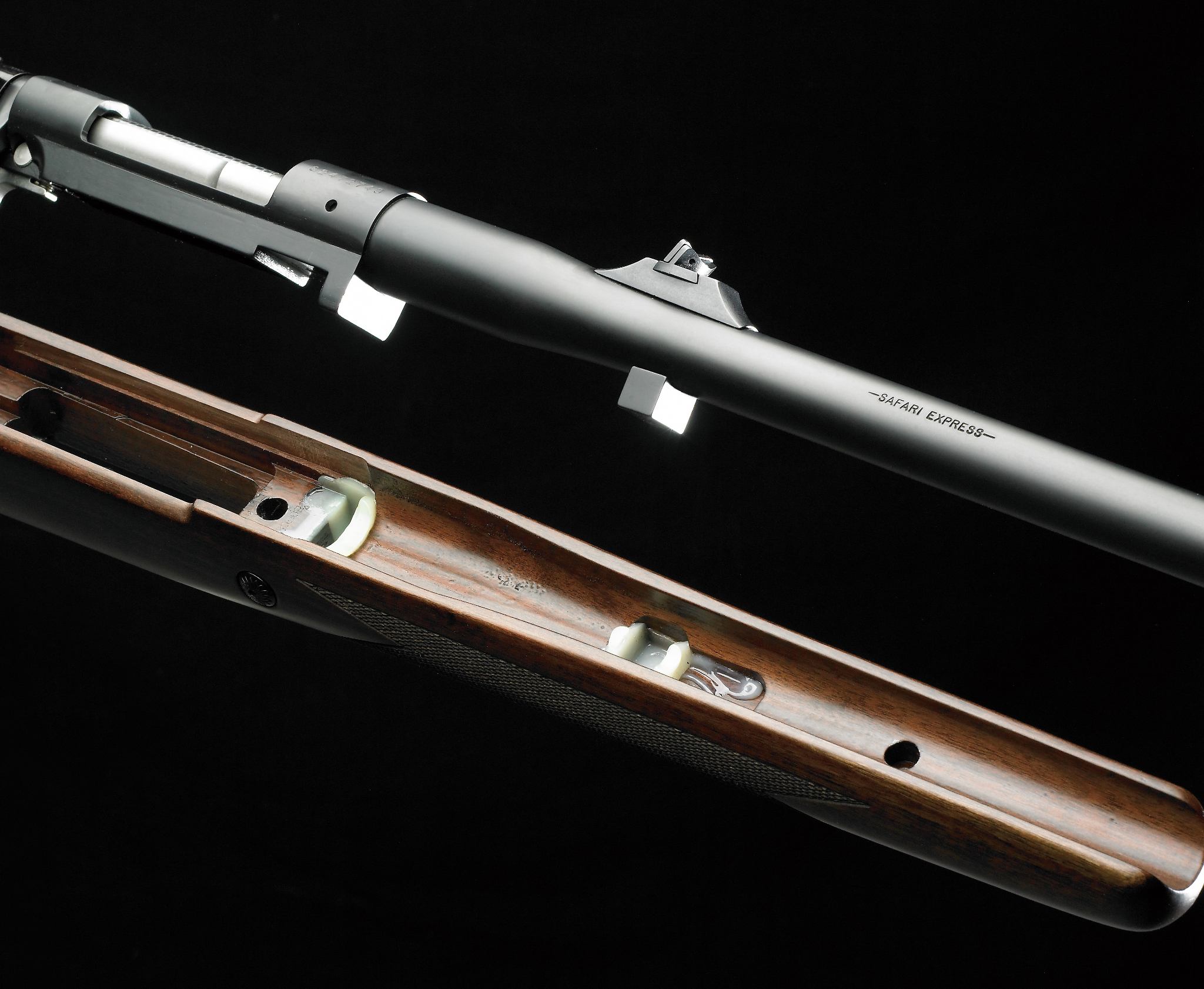
Checkering is cut and the Safari Express has all steel bottom metal with trigger guard and magazine floorplate. All metal is finished in a non-reflective satin blue whilst the front sling swivel stud is mounted on the barrel as is traditional and preferred on safari rifles.
The Safari Express is made as a fully practical “no-frills” safari rifle, made as a rifle you can depend on even when facing a dangerous quarry.
You will find this model with detailed specifications on the Winchester web site if you click here.
Alaskan

The Alaskan model is made in 30-06, .300 Winchester Magnum, .338 Winchester Magnum, and .375 Holland & Holland Magnum. it is made to be a tad lighter than the Safari Express having alloy bottom metal and trigger guard with a steel magazine floor plate. The stock reinforcing depends on caliber, the .375 Holland & Holland having twin stock reinforcing cross-bolts while the .30-06 is as illustrated above. The Alaskan has a raised cheek-piece and is the only rifle in the current Model 70 line-up so equipped. The rear sight is folding which makes the rifle a natural for use with an aperture sight if you prefer.
You will find this model with detailed specifications on the Winchester web site if you click here.
Sporter

The Model 70 Sporter is the standard model and is a quality production sporting rifle. The bottom metal/trigger guard are alloy with a steel magazine floorplate. The pistol grip cap is plastic and the stock wood is satin finished Grade I walnut.
Calibers: .25-06, .264 Winchester Magnum, .270 Winchester, .270WSM, 7mm Remington Magnum, .308 Winchester, 30-06, .300 Winchester Magnum, .300WSM, .325WSM, .338 Winchester Magnum.
You will find this model with detailed specifications on the Winchester web site if you click here.
Featherweight

The Featherweight uses alloy bottom metal and a light profile barrel to prune the pounds off this rifle. The stock wood is Grade I walnut and features cut checkering with a Schnabel fore-end and plastic pistol grip cap. Weight varies depending on caliber, for example the .30-06 with its 22″ barrel tips the scales at 7lb.
Calibers: .22-250, .243 Winchester, .25-06, 6.5 Creedmore, .264 Winchester Magnum, .270 Winchester, .270WSM, 7mm-08, 7mm Remington Magnum, .308 Winchester, 30-06, .300 Winchester Magnum, .300WSM, .325WSM.
You will find this model with detailed specifications on the Winchester web site if you click here.
Featherweight Compact

The Featherweight Compact is made on a short action with a 20″ barrel to prune off as much weight as possible. It is only available in short cartridge chamberings and weighs 6lb 8oz. This is a rifle that competes with the lightweight lever action rifles for weight and lively handling, but with bolt action accuracy and range.
Calibers: .22-250, .243 Winchester, 7mm-08, .308 Winchester.
You will find this model with detailed specifications on the Winchester web site if you click here.
Featherweight Stainless

The Model 70 Featherweight Stainless is as per the Featherweight except in matte stainless steel. In .264 Winchester Magnum with a 24″ barrel the rifle weighs 7lb 4oz.
Calibers: .243 Winchester, .264 Winchester Magnum, .270 Winchester, 7mm Remington Magnum, .308 Winchester, .30-06, .300 Winchester Magnum.
You will find this model with detailed specifications on the Winchester web site if you click here.
Featherweight High Grade Maple

The Model 70 High Grade Maple features a Gloss finish AAAA Maple stock with cut checkering and Schnabel forearm.
Calibers: .243 Winchester, .264 Winchester Magnum, .270 Winchester, 7mm Remington Magnum, .308 Winchester, .30-06, .300 Winchester Magnum.
You will find this model with detailed specifications on the Winchester web site if you click here.
Featherweight Dark Maple Stainless

The Model 70 Dark Maple Stainless features a Satin finish AAAA Dark Maple stock with cut checkering and Schnabel forearm. This is a very pretty rifle as can be appreciated in the picture above and it features stainless steel bottom metal/trigger guard with stainless steel floorplate. The pistol grip cap is polymer. In the magnum calibers such as the .264 and .300 Winchester Magnums and the 7mm Remington Magnum with 24″ barrel the rifle weighs 7lb 4oz.
Calibers: .243 Winchester, .264 Winchester Magnum, .270 Winchester, 7mm Remington Magnum, .308 Winchester, .30-06, .300 Winchester Magnum.
You will find this model with detailed specifications on the Winchester web site if you click here.
Extreme Weather SS

The Model 70 Extreme Weather SS is a perfect choice for that once in a lifetime journey to Central Asia for an Argali ram or Ibex. It is made to be light enough to carry, and absolutely weather resistant whether cold, wet or dry and will cope with places where you might experience all four seasons in the one day. The rifle is fitted with a Bell and Carlson™ lay-up composite stock in a textured charcoal gray matte finish for improved grip in adverse conditions. It also manages to look handsome. The stock has an aluminum bedding system to absolutely ensure the rifle is stable in all conditions. Calibers range from .243 Winchester up to .338 Winchester Magnum with many good choices available.
Calibers: .243 Winchester, .25-06, 6.5 Creedmore, .264 Winchester Magnum, .270 Winchester, .270WSM, 7mm-08, 7mm Remington Magnum, .308 Winchester, 30-06, .300 Winchester Magnum, .300WSM, .325WSM, .338 Winchester Magnum.
You will find this model with detailed specifications on the Winchester web site if you click here.
Coyote Light Suppressor Ready

The Coyote Light is a long range rifle with stable synthetic stock complete with aluminum bedding system. Pruned of unnecessary weight this rifle is ready for attachment of a suppressor.
Calibers: .22-250, .243 Winchester, 6.5 Creedmore, .270WSM, .308 Winchester, .300 WSM, .325WSM.
You will find this model with detailed specifications on the Winchester web site if you click here.
Coyote Light

Fitted with a Bell and Carlson™ lay-up composite stock the Coyote Light has the same aluminum bedding system as the Extreme Weather SS and the Coyote Light Suppressor ready.
Calibers: .22-250, .243 Winchester, .308 Winchester, .270WSM, .300WSM, and .325WSM.
You will find this model with detailed specifications on the Winchester web site if you click here.
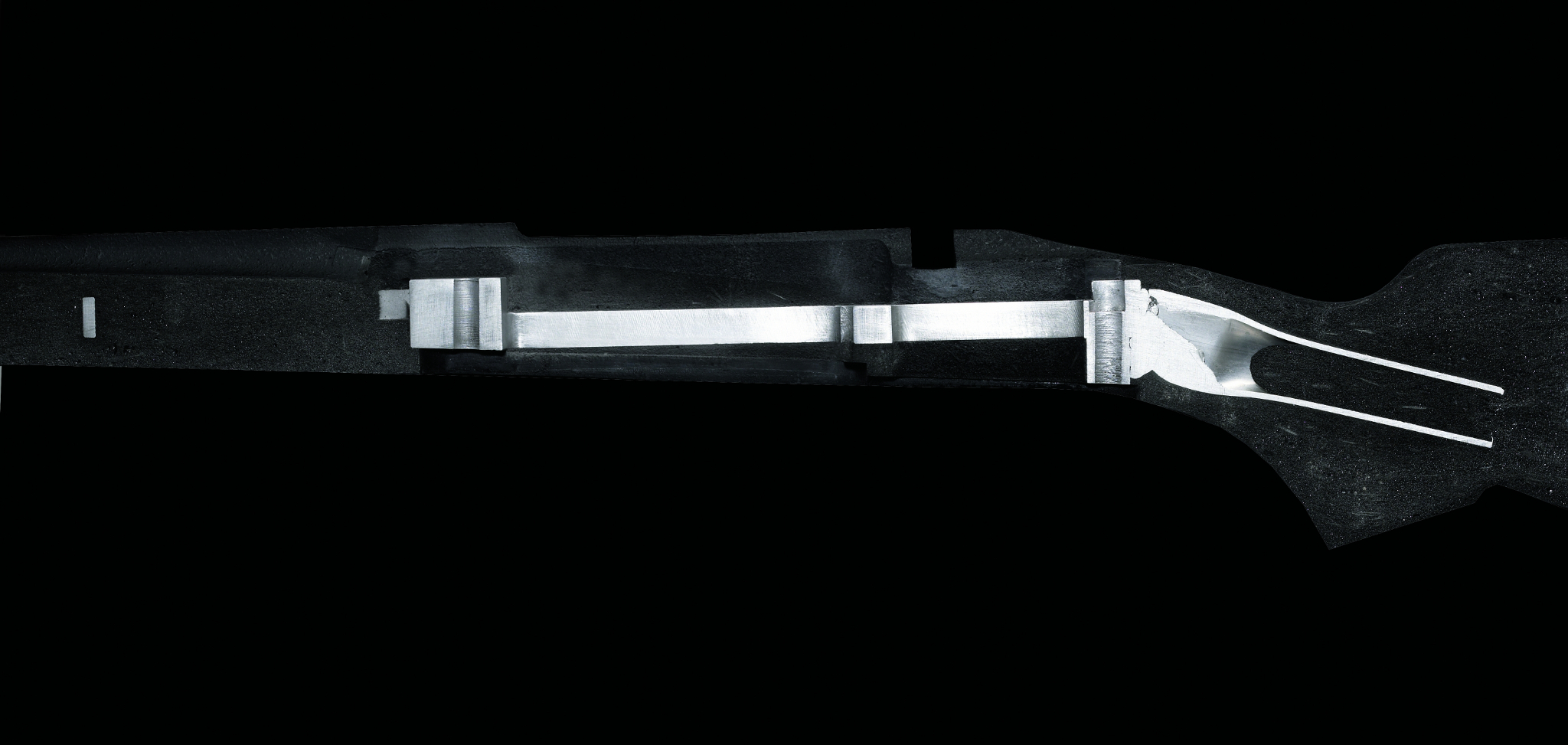
Conclusion
If you are in the market for a rifle and you are looking for something “top-shelf” and yet affordable then the current model Winchester Model 70 line-up would be a great place to start looking. The current production Model 70 is, in my humble opinion, having owned one for a couple of years now, a better rifle than any Model 70 that has preceded it. The fit and finish, the standard of manufacture is, in a word, flawless. The function is faultless, it is a rifle that is a joy to use.
When we look at the sporting rifles being offered nowadays there are a lot of very cheap rifles, there are some in the intermediate range, and there are bolt actions, such as the current production Mauser 98, that are rather expensive. The current production Model 70 is priced in the intermediate range, but delivers a rifle that is as good or better than most of the rifles in the expensive class. By comparison with the current production Mauser 98 as an example, the Model 70 offers a controlled feed action that is at least its equal.
The pre-64 Model 70 earned itself an enviable reputation and deserved all the accolades it received. Winchester made the mistake of trying to make it a cheap rifle to compete in the “lowest common denominator” market. It was a change that was doomed to fail and fail it did, with the Model 70 never quite recovering its reputation, something it quite possibly has still not recovered from.
The new Model 70 is everything the pre-64 was, and then some, try putting a pre-64 Super Grade next to one of these current production Super Grades and judge for yourself.
The Model 70 was called “The Rifleman’s Rifle”. The current production rifles are the fulfillment of that name. If you are a bolt action rifle aficionado, as I am, then the current Model 70 is a rifle that you are certain to appreciate.
Photo Credits: Winchester, Numrich, Rock Island Auction, iCollector, Louis [email protected].
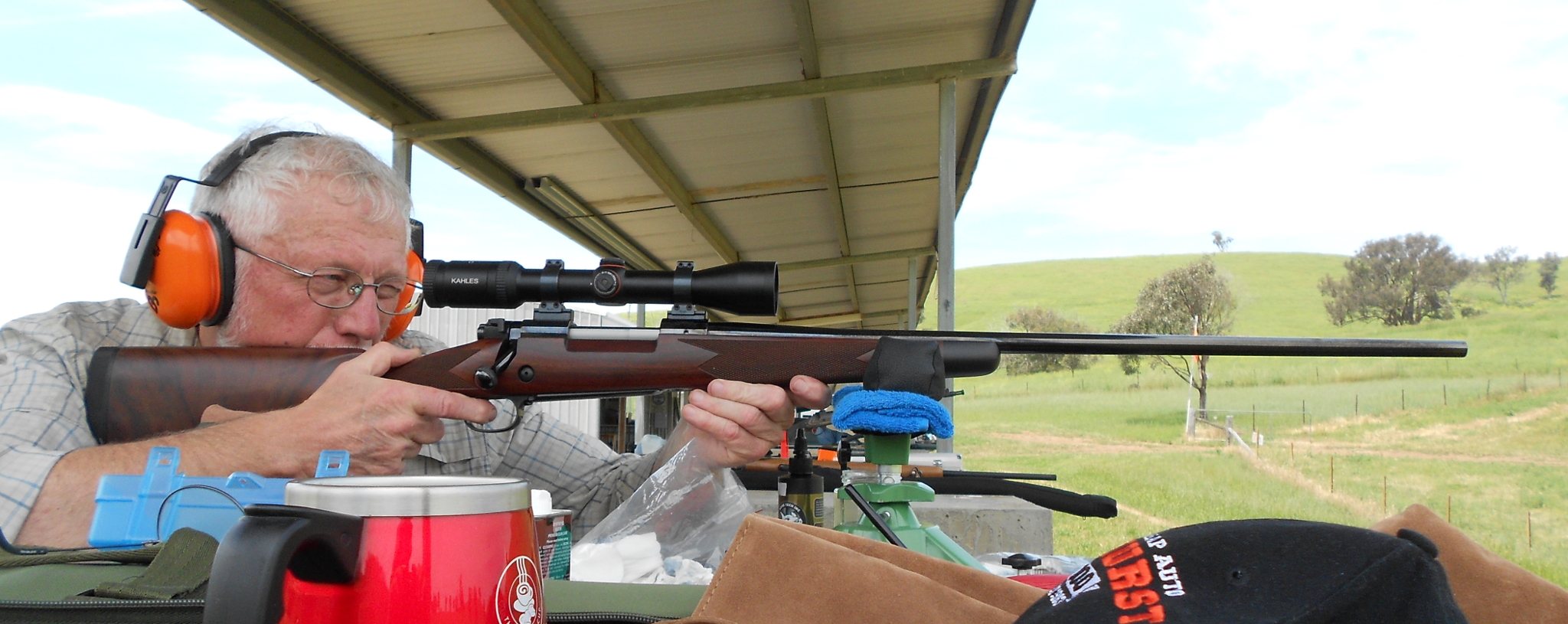

Jon Branch is the founder and senior editor of Revivaler and has written a significant number of articles for various publications including official Buying Guides for eBay, classic car articles for Hagerty, magazine articles for both the Australian Shooters Journal and the Australian Shooter, and he’s a long time contributor to Silodrome.
Jon has done radio, television, magazine and newspaper interviews on various issues, and has traveled extensively, having lived in Britain, Australia, China and Hong Kong. His travels have taken him to Indonesia, Israel, Italy, Japan and a number of other countries. He has studied the Japanese sword arts and has a long history of involvement in the shooting sports, which has included authoring submissions to government on various firearms related issues and assisting in the design and establishment of shooting ranges.

